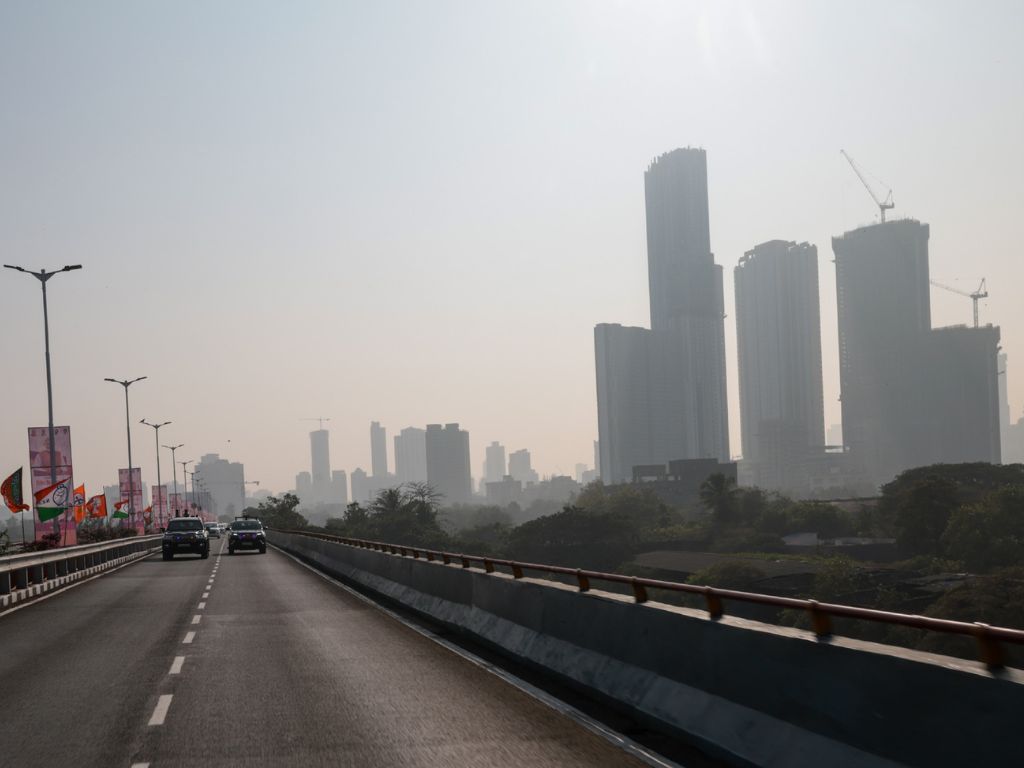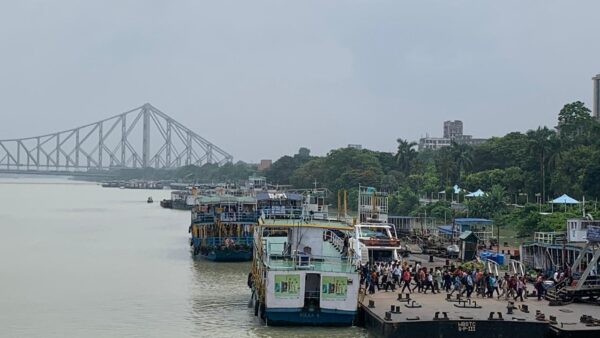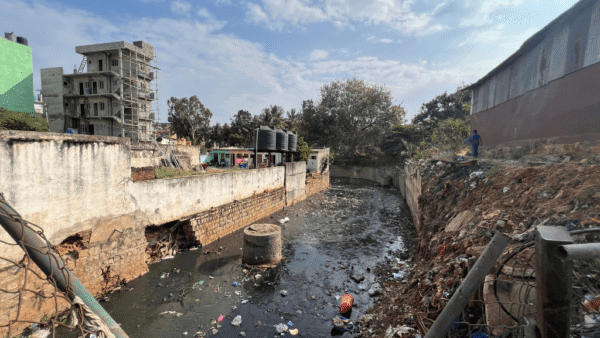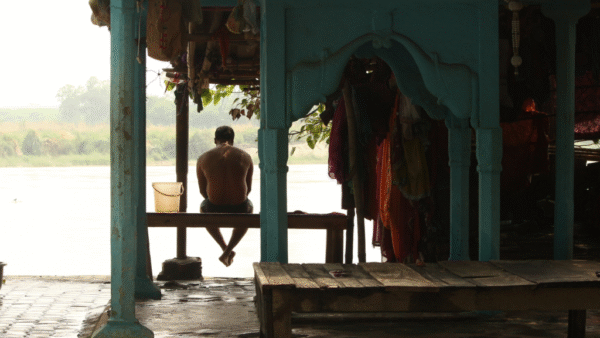In our cities, the approach to transport problems are supply-based solutions such as more road space to address the traffic issue because it is a simplistic approach. What is lost on planners is that more cars means more space. Building a metro does not take care of this, as we have seen in Delhi and Mumbai. It does not reduce the number of cars, as numbers show in these cities. Metro would not decrease number of cars, making such vehicles expensive like Singapore can.[1] [2]
Let’s break down the numbers. A car takes 6 square metres of road space, typically carries three-four people and runs for 30-40 kilometres in a day. A bus that’s 12 metres long and 3 metres wide takes about 35 square metres space but carries about 1,000 people per day because it makes multiple trips. Cars also claim city space for parking. They are parked longer than they are used; they need three designated parking spaces at home, workplace and other destinations. This means Mumbai’s 2.3 million cars need about 6.9 million parking slots. Taxis and rickshaws are somewhere in between; they carry about 100 people a day and require less space than cars. So, simple arithmetic tells us why cars are not the ideal transport mode.
Numbers are important because they take the vagueness out of the argument. A parking space usually consumes about 200 square feet; it is about 350 square feet in the new-fangled vertical multi-storied parking lots. On an average, space in Mumbai costs Rs 30,000 per square foot though it can go up to Rs 1,00,000 in a few places. Lakhs of cars are parked on the roads, especially at night, some 24×7. They take away space for other modes, especially buses and pedestrians. The issue of parking is a dangerous byproduct of the car culture. Many walk or bicycle but the road infrastructure does not support them or keep them safe; besides, not everyone can walk to all places. This is why we should look at public transport seriously.
Public transport is not just morally superior but a viable solution to transport problems in our cities. Car ownership has steadily increased. Though car owners and users are a minority, they occupy almost 80 to 90 percent of the road space. This is an uneconomical and inequitable use of the space. Cities are all about space. Transport, both private and public, has to be seen from this perspective.
Mumbai has had a parking authority for the last five years but it has not provided solutions. It means that 15 urban planners worked for five years but failed to make any impact. They managed some off-street parking; eight to ten rows are provided but not where people want to park. For example, along Tulsi Pipe Road, the commercial and corporate hub, many high-rises got additional FSI for parking and made thousands of parking spaces. But most of them lie idle. Parking spaces are created as by-products of constructing apartments or offices but the vertical spaces are not fully embraced. Cars are then parked on streets.
Cities allow the wealthy to purchase public space through liberal and unregulated Floor Space Index (FSI) and Transfer of Development Rights (TDR); they have multiple cars, they claim more space for parking and so on. Governments will, in fact, create space for them by constructing parking lots on public land which could have been used for more common purposes. This is why parking is detrimental to common space in cities. We must pay more attention to this aspect of transport too.

Photo: Wikimedia Commons
Long-term, sustainable solutions
The basic space requirement for people travelling by cars, buses, on bicycles and on foot needs to be assessed. As more people use the car, the requirement of space rises. The increasing road space used for fewer people means inequality, and leads to sabka saath, 10-12 percent motorists ka vikas. Even car users are not experiencing great development because they get stuck in traffic jams.
There can be two solutions. The first is supply-centric in which the number of cars on the road have to be reduced. Every city has its own limitations and these have to be respected. When people believe the road space is as free as air, the demand for cars rises. American cities are spacious enough to be car-centric but India cannot afford this model. Even New York imposes high fees on parking which can be $50 per hour. We are not willing to pay even Rs 20. Tokyo, Singapore and London have high taxes on cars, and in Shanghai, there are annual taxes of 5-10 percent for owning a car.
Though capital-driven economies, they are saying: you have the freedom to own a car but you have to pay the cost it incurs to others. In Indian cities, car owners occupy space and don’t pay for it, which is unfair. The space is so sparse that even if some of us are willing to pay, it is not available because someone else has parked for 24 hours. It costs too little. People are ready to pay Rs 100 for a cup of coffee these days, so why not pay that for 100-150 square feet parking space? Also, the number of cars must be restricted in relation to the road space available. Ours are dense cities where road space is limited. This is why more and better public transport becomes crucial.
The second solution is demand-centric and involves increasing the facilities of buses, trains, metro, also bicycling and walking. For walking, all the infrastructure needed is better footpaths but the quality is atrociously bad. Every footpath should be 6 inches high, not 1-2 feet high; this is elementary civil engineering. There should be no vehicles parked on footpaths. Where there are wider footpaths, bicycle lanes can be provided too.
Bus lanes are an overlooked aspect of transport infrastructure. Buses carry a large number of people at high speeds and low cost; arterial roads have high volumes too. An exclusive bus lane was experimented with in Mumbai and met with spectacular success, 180 buses could run in an hour in one lane with a frequency of 30 seconds. One bus lane carries more people than two car lanes together. Making bus lanes costs almost nothing and can be implemented in three to six months. If they fail, they can be withdrawn; the expenditure would be about Rs 1 crore for a 10-kilometre lane compared to almost Rs 1,00,000 crore for a road. Electric air-condition buses are comfortable and can be made more frequent and faster.
Metro is considered an alternative public transport but it is expensive. A kilometre of metro costs several thousand crores to build and most metro networks lose money; they barely break even. That’s the truth but planners and governments do not face it. I am not saying that there should be no cars. But they cannot have unlimited freedom to park and drive anywhere and complain about road congestion. Congestion is the result of having too many people wanting to go by car to the same place.
What is needed is to use different modes of transport linked to the volume of commuters. The volume of 30,000 per hour means use the metro; at 10,000-15,000 an hour, exclusive buses are a solution and when the volume is only 5,000 or so, regular buses will do. The way that newer roads and highways are increasingly designed for cars reinforces people’s thinking that cars are the best way to travel, which is not the case at all.
Public transport must run on the cost benefit it provides. Suburban trains cost 20 paise per kilometre for a second-class pass. That is what 60 percent of railway commuters pay. The metro costs Rs 4 per kilometre, which is 20 times higher, while buses cost Rs 1.5 per kilometre. To improve, there should be more trains even at a higher price; it could cost Rs 1 to 1.8 per kilometre. If you have volumes like buses do, then that can be affordable to almost everyone. But the metro is affordable only to 20-25 percent people. Only about 10-15 percent use cars.
At this stage, it may not be possible to provide solutions that suit all the people, but I would look after the majority 70-80 percent who need and use public transport.

Photo: Wikimedia Commons
Shift in the planning paradigm
The transport planning is part of the larger planning paradigm and this needs a shift. If affordability is the barometer, then Mumbai should not have spaces like the Bandra Kurla Complex (BKC) and increase of FSI to 4 which is complete nonsense. COVID has taught us that we can work from home also; even if people have to be in office, everyone does not have to go to Nariman Point or BKC. Many clerical and managerial jobs can be done remotely.
So, instead of having more business districts and towers in south Mumbai, Worli, and BKC, the city should allow more office spaces in say Chembur and Kandivali, around residential areas so that most people can walk or cycle to their workplace.
This leaves very few to travel by bus or train. The city should be designed like that. Mumbai can still do that by shifting offices to north Mumbai so that they are more accessible in mixed-use areas which allows people to work and live within short distances. In Taiwan, where I visited years ago, many small factories were located in residential areas. They did not have this idiotic and old-fashioned urban planning which gives us a concentration of business and commercial areas.
Work and workplaces can be dispersed in various ways. Remote work is a long-term solution; we will not need to build fancy and expensive offices. With workplaces close by or by investing in remote work, physical travel by cars can be reduced. Cities can then focus on institutions for public good like schools, colleges, hospitals and housing rather than offices. For the minimum commutes, local trains and buses should override the metro.

Photo: Wikimedia Commons
Mathematics and connectivity
In Mumbai this year, four mega infrastructure projects are on the horizon. One, the Mumbai Trans Harbour Link, has just opened but sadly it does not allow buses. This is like having only first-class compartments when most travel by second class in trains. Besides this, the metro network, the Coastal Road, and the fifth and sixth railway lines between Khar and Borivali are underway, worth almost Rs 75,000 crore, most of it public funds. We should, therefore, calculate the performance of each one.
I have proposed to the authorities including the BMC and Mumbai Metropolitan Region Development Authority to do a mathematical survey. Using smartphones, take videos of the traffic to calculate how many cars, buses, taxis and rickshaws use the road in an hour during peak hour, in the north-bound direction. Do this for ten roads now and repeat in 2025 after the completion of all the projects. Only then will we know the true worth of the thousands of crores of investment. This infrastructure is not productive or useful; it is foolish.
Planners and governments like expensive projects, people believe they are the solution. The Mumbai-Ahmedabad bullet train is actually cheaper than Mumbai’s Coastal Road on a per kilometre basis; most highway projects are more expensive than railway infrastructure projects. The railways are also more beneficial to the environment but require high investment. Solutions and infrastructure projects should be done with sound mathematics.
In cities, space is a common right and should be used equitably. It should be used with mathematical precision to know the yield from investment, especially that which is meant for private transport. The Coastal Road is horrible mathematics. Now that it is there, it should be toll-free for buses while cars pay toll. This can be done, it should be the universal policy.
We should walk the talk on public transport.
Ashok Datar was the founder trustee of Mumbai Environmental Social Network (MESN), an NGO accredited by UN-Habitat that has worked on projects related to parking and sustainable use of road space. He has also worked as a Parking Expert for Mumbai Parking Authority for two years between 2019 and 2022. For the last 30 years, he has devoted his time to promote sustainable transport solutions nationally and at a city level.
Cover photo: Mumbai Trans Harbour Link. Credit: Wikimedia Commons




